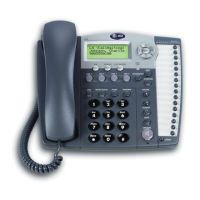
Do you have a question about the AT&T Small Business System Speakerphone and is the answer not in the manual?
Lists all components included in the product box for initial setup.
Specifies the necessary tools required for installing the telephone.
Explains essential setup for DSL users to prevent interference with phone features.
Defines key terms and features used throughout the user manual.
Continues the definition of technical terms relevant to the phone system.
Sets default mode for One Touch buttons: Intercom or Telephone.
Assigns a unique extension number to the phone.
Controls the ringer for each line, either On or Off.
Selects a specific ring pattern for incoming phone calls.
Sets a delay time for Central Office ring.
Enables or disables automatic hearing of sounds when paged.
Sets the dial mode to Tone or Pulse dialing.
Turns on or off an audible reminder for calls on hold.
Sets the current time and date for the phone.
Turns Line Usage on or off for each individual line.
Designates a primary line for automatic selection when making or answering calls.
Chooses the default mode for calls connected with the handset in the cradle.
Sets the speed for the Rapid Scroll feature for faster menu navigation.
Controls whether the LCD screen backlight is turned on or off.
Manages the display of COVM (voice mail) indicators for each line.
Resets COVM indicators, clearing them manually when no new messages are present.
Programs Home and up to five Local Area Codes to correctly display Caller ID numbers.
Assigns the phone to a specific Line Group for managing shared lines.
Resets all programmed features to their original default settings.
Specifies if the phone serves as the Console phone for the Centrex system.
Sets the delay duration before calls route to the Centrex Console phone.
Selects the language for the phone's screen displays.
Guides through installing a 9V battery for power failure backup.
Continues the battery installation steps, including connecting the wedge for table/desk use.
Instructions for connecting line cords for table or desk mounting.
Instructions for connecting the handset cord and power adapter for table/desk mounting.
Steps for removing the wedge and reversing the handset tab for wall mounting.
Continues wall installation by connecting cords and checking for dial tone.
Details mounting the phone on the wall and initialization process.
Explains how to use AUX jacks for connecting modems or fax machines.
Outlines the hierarchical structure of the phone's menu system for feature setup.
Continues the menu structure outline, showing options like ONE TOUCH, INTERCOM, TELEPHONE, etc.
Provides steps to quickly access the LANGUAGE menu for changing screen display language.
Explains how to use the Rapid Scroll feature for quicker scrolling through menu items.
Configures whether EXT buttons initiate intercom or One Touch calls.
Guides on assigning a unique extension number to each phone for intercom feature to work.
Instructions to turn the ringer on or off for each individual phone line.
Allows selection of different ring patterns for incoming phone calls.
Sets the duration before incoming calls will ring at the extension.
Configures whether sounds are heard automatically when paged or only when MUTE is pressed.
Sets the dial mode to either Tone or Pulse dialing.
Enables or disables an audible reminder for calls that are currently on hold.
Guides on setting the current time and date for the phone display and features.
Allows turning line usage on or off for specific lines, restricting their use.
Designates a primary line for automatic selection when making or answering calls.
Chooses the default mode (headset or speakerphone) for calls when the handset is in the cradle.
Sets the speed for the Rapid Scroll feature for faster menu navigation.
Controls whether the LCD screen backlight is turned on or off.
Manages the display of COVM (voice mail) indicators for each line.
Resets COVM indicators, clearing them manually when no new messages are present.
Programs Home and Local Area Codes to correctly display Caller ID numbers.
Assigns the phone to a specific Line Group for managing shared lines.
Resets all programmed features to their original default settings.
Designates this phone as the Console phone for a Centrex system.
Sets the delay duration before calls route to the Centrex Console phone.
Selects the language for the phone's screen displays.
Guides on initiating and receiving calls using handset, speakerphone, or headset.
Continues instructions for making and answering calls using the headset.
Explains how to switch between different audio modes (handset, headset, speakerphone).
Describes the automatic call timer that tracks elapsed time during calls.
Details how to ensure only one set uses a line at a time, preventing eavesdropping.
Explains how to activate DND to prevent paging tones, voice paging, or incoming call rings.
Covers adjusting handset, speakerphone, headset, and ringer volumes.
Information on turning the ringer on or off for each line.
Instructions for redialing the last dialed number using handset or speakerphone.
Explains how to review and redial the last six numbers dialed from the extension.
Details the feature that automatically redials a number at intervals until answered.
Instructions on how to place a call on hold, including reminder beeps and releasing the hold.
Guides on switching between active phone lines without dropping a call.
Explains how to activate the Mute feature to prevent the other party from hearing you.
Use of the Flash button to activate subscriber services like Call Waiting.
Allows temporary switching from dial pulse to touch tone dialing during a call.
Instructions for setting up three-party calls and talking privately with one party.
How to disconnect a specific party from a conference call.
Guides on transferring a call to another system phone, including blind transfers.
How to transfer a call and announce it to the receiving party before connecting.
Steps for answering a call that has been transferred from another extension.
Explains the 'LOW BATT' screen message indicating a need for battery replacement.
A guide to the meaning of various indicator lights (LINE, INTERCOM, MUTE, SPEAKER, HEADSET, DND, AUTO) on the phone.
Instructions for storing phone numbers for quick dialing using EXT buttons.
Continues storing phone numbers, including copying the last dialed number.
Allows including a pause in a stored dialing sequence for special services.
Stores touch tone signals within a dialing sequence for special services with rotary phones.
Stores the switchhook flash signal in a dialing sequence for custom-calling services.
Instructions for reviewing stored numbers in the One Touch locations.
Guides on how to dial numbers stored in One Touch locations based on preference settings.
Outlines the directory menu structure for managing contacts.
Detailed steps for entering names and phone numbers into the directory.
Continues storing names and numbers, including copying the last dialed number.
Allows adding a pause to a directory number for dialing sequences.
Stores tone signals in a directory number for dialing sequences on rotary phones.
Stores the switchhook flash signal in a directory number for custom-calling services.
Instructions for browsing and reviewing entries stored in the phone directory.
Guides on how to change the name and/or number of an existing directory entry.
Instructions for dialing numbers stored in the phone directory.
Steps to delete a specific name and number entry from the directory.
Procedure to erase all entries from the phone directory simultaneously.
Explains basic intercom functions like calling, paging, and conference calls.
Guides on initiating an intercom call using the handset.
Guides on initiating an intercom call using the speakerphone or headset.
Instructions on how to answer an incoming intercom call using handset or speaker/headset.
How to end an intercom or page call by hanging up or pressing a button.
Steps to send a page announcement to a single specific extension.
How to respond to a single-phone page announcement.
Instructions for sending a page announcement to all phones in the system.
How to receive and respond to a system-wide page announcement.
How to invite a third party into an intercom conversation from an outside line call.
Activates the speakerphone of another phone to monitor sounds in that room.
Explains how incoming Caller ID information is displayed on the screen.
Provides details on the format and duration of Caller ID display information.
Instructions for managing calls received while already on a call using Caller ID with Call Waiting.
How to view and switch between Caller ID information for multiple incoming calls.
Explains various messages that may appear on the screen related to Caller ID.
Explains the meaning of the Message Waiting and NEW CALL lights and associated screen information.
Provides an overview of viewing the call history summary, including total and new calls.
Detailed instructions for reviewing individual records within the call history.
Guides on removing specific call records or all records from the call history.
Instructions for dialing a phone number directly from the call history records.
Allows changing the format of numbers in call history before dialing.
Steps to save caller information from call history into the phone directory.
Instructions for saving a number from call history to a One Touch location for speed dialing.
Explains the use of a fax switch to differentiate voice and fax calls.
Troubleshooting steps for when the phone is not functioning correctly.
Solutions for issues where no dial tone is heard upon lifting the handset.
Steps to resolve problems where the phone fails to ring for incoming calls.
Addresses the error ring when assigning duplicate extension numbers.
Troubleshooting steps when intercom paging signals are not received.
Solutions for when unable to join an ongoing conversation due to privacy features.
Explains the error tone when a page call cannot be completed, often due to DND.
Identifies the double beep as a call on hold reminder and how to turn it off.
Solutions for when LINE lights stay on without a connected line.
Addresses issues with tone signaling not activating remote devices during conference calls.
Explains phone operation during a power failure when a battery is installed.
Explains the 'Powerfail' message and what causes it.
Steps to resolve issues where the display screen is blank.
Troubleshooting for advanced features like intercom, hold, and privacy, especially with DSL.
Explains requirements for seeing Caller ID information during an active call.
Troubleshooting steps when the NEW CALL light flashes, indicating unreviewed messages.
Explains the COVM display and how to manage it based on Voice Mail service.
Troubleshooting for COVM indicators that remain on when no messages are present.
Explains how Line Groups manage shared lines and ensure accurate LINE light status.
Provides a chart showing extensions and their line group assignments for shared lines.
Details how to use the fourth line as a private line assigned to a single extension.
A checklist of essential steps before expanding or installing for Centrex service.
Guides on programming a phone to be the Console phone for the Centrex system.
Explains how the Console phone receives calls and uses Centrex switching.
Sets the delay duration before calls route to the Centrex Console phone.
Steps for the Console phone to answer a call with a delayed ring.
Instructions for picking up another station's line on the Console phone.
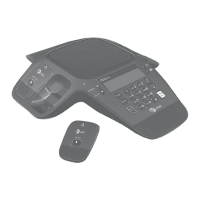
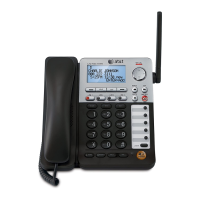


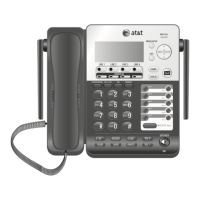
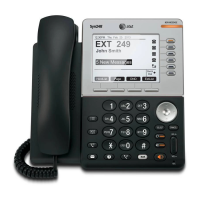

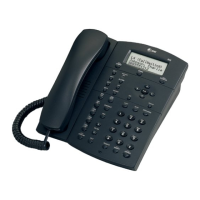
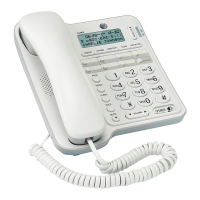
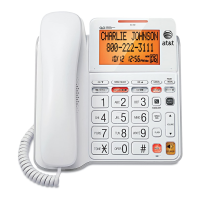
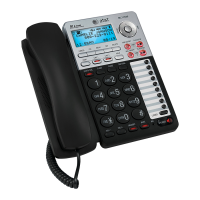

